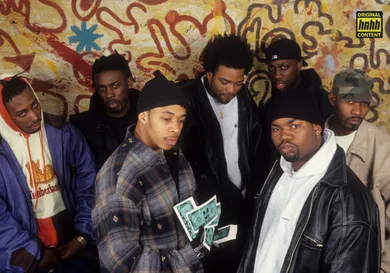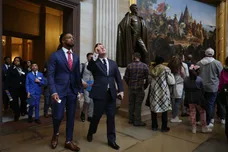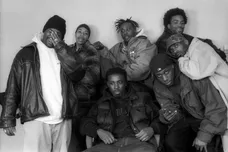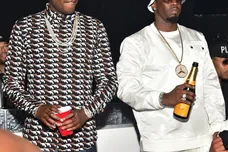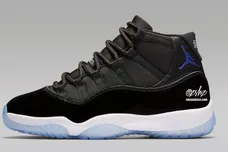It’s become all too familiar to see an artist defined by their debut album. Not even the Wu-Tang Clan are immune to such a fate. Enter The Wu-Tang: 36 Chambers has been hailed as a classic and rightfully so. Since its inception, the Clan has steadily cemented itself on both a unified and individual basis, having amassed a collective discography of iconic and timeless records throughout their storied run. On November 21st, 2000, nineteen years ago to this day, Wu-Tang dropped off their third studio album The W. A project that has, in the modern discourse, gone unsung for far too long.
Lest we forget, The W marked the arrival of “Protect Ya Neck Part 2,” an updated take on one of hip-hop’s enduring tracks. And by some miracle the Clan delivered a sequel worthy of its predecessor, with the full Wu roster sliding effortlessly over a pair of distinctive RZAinstrumentals. Nevermore has their chemistry been more evident, with standout verses from Raekwon (“waves is spinning, blades is spinning” entrance is ridiculous), GZA, and U-God, who ushers in the sinister beat-switch with a badass flow. On that note, The W shines in its sonic aesthetic, boasting stripped-down and notably dark production. RZA has never been one to shy away from the shadows, but here, he draws his blade and welcomes all supernatural challengers.
“Careful (Click Click)” stands as a personal favorite, a chilling boom-bap masterpiece lined with violent lyricism. Ghostface Killah slides through with the boxcutter, spitting abstract poetry the likes of which need close readings. “Syringes, rubber bands, needles, the 60's Granddaddy Caddy was copped for 6 G's,” he spits, leaving listeners scrambling to infer meaning that’s just out of reach. “B'gosh all that Oshkosh jumpers, pink Champelle, brown paper bags, wall to wall bumpers.” Achieving title through a repeated hollow warning, “Careful” stands alongside some of Wu’s finest anthems. It also happens to one of their darker joints, which speaks to the project’s disavowal of then-modern production trends.
Bob Berg/Getty Images
Even when RZA pulls back the curtain and allows himself space to break immersion, the results thrive. “Gravel Pit,” which exploded onto BET screens as a Prehistoric visual, featured an uncommonly pristine instrumental from Bobby Digital. Not to mention an infectious hook, backed by a recurring chant from Tical in the backdrop, which grounds the track comfortably in the mainstream territory. And yet the Clan sacrifices none of their unique approach to lyricism, with Method Man setting things off with a stop-and-start flow. “From Park Hill to house on haunted hill, every time you walk by your back get a chill,” he spits. “Let's peel, who want to talk rap skills, I spit like a semi-automatic to the grill.”
The album, which features strong appearances from some of the East Coasts finest in Nas, Busta Rhymes, and Redman, maintains a cohesive sound from start to finish. There’s plenty to unpack throughout the journey beyond the appeal of Wu-Tang members strictly bodying RZA’s production. “I Can’t Go To Sleep” finds Ghostface Killah unleashing a goosebumps-inducing performance, straining his voice to the point of tears as he openly wars with his PTSD. Redman and Method Man pick up where Blackout left off on “Redbull,” exchanging grimy verses of string-fueled tension. There’s even a verse from Ol’ Dirty Bastard, who links up with Snoop Dogg on the charmingly demo-esque “Conditioner.”
Nineteen years removed from its initial release, it's time to start giving The W the classic status it deserves. It's arguably Wu-Tang's darkest album, and for a project to retain an early-nineties ruggedness at the Platinum Era's onset is no easy feat. Take a moment to revisit The Wu-Tang's third endeavor, and if you have any fondness for it be sure to show some love in the comments below.
